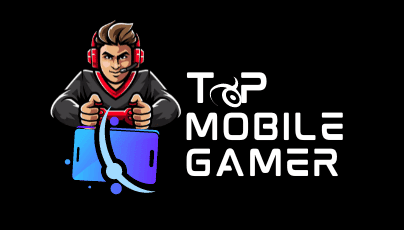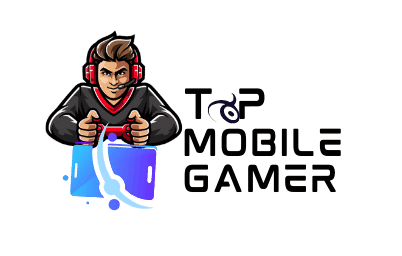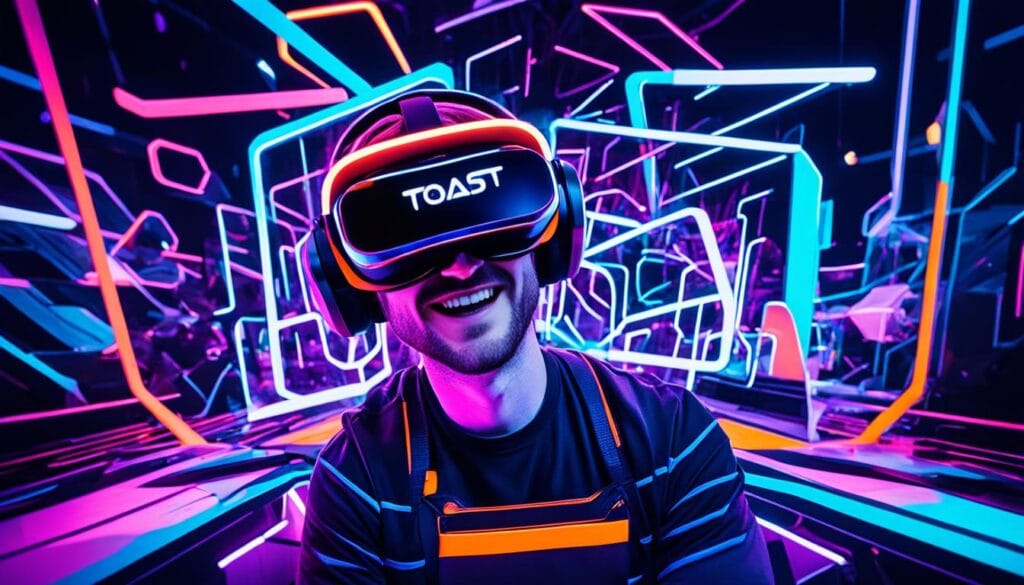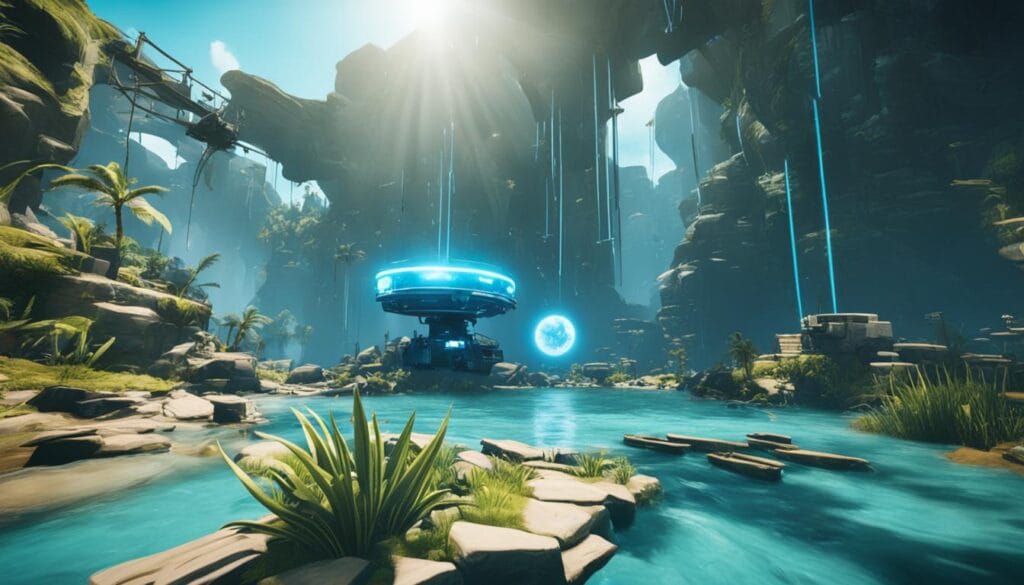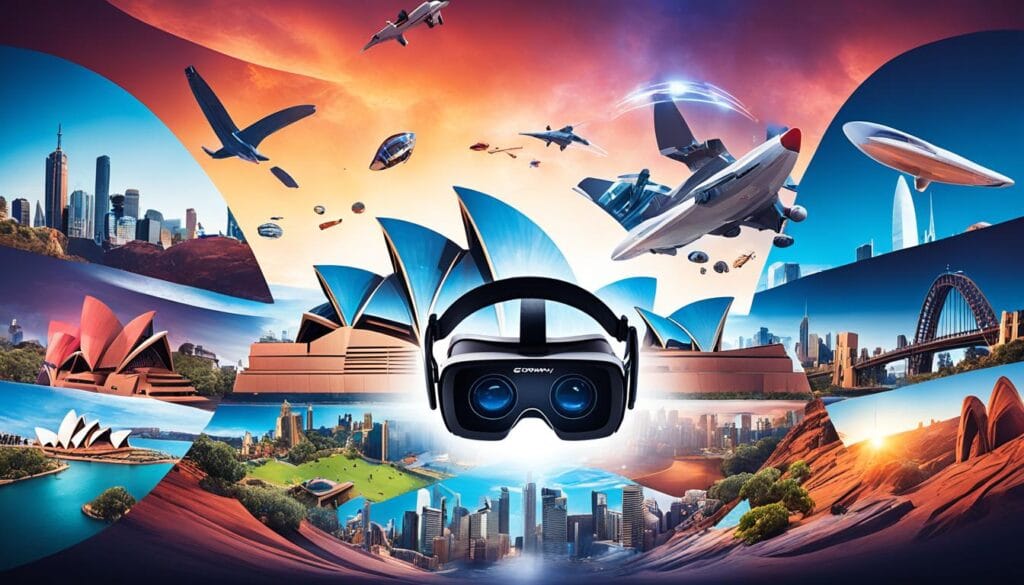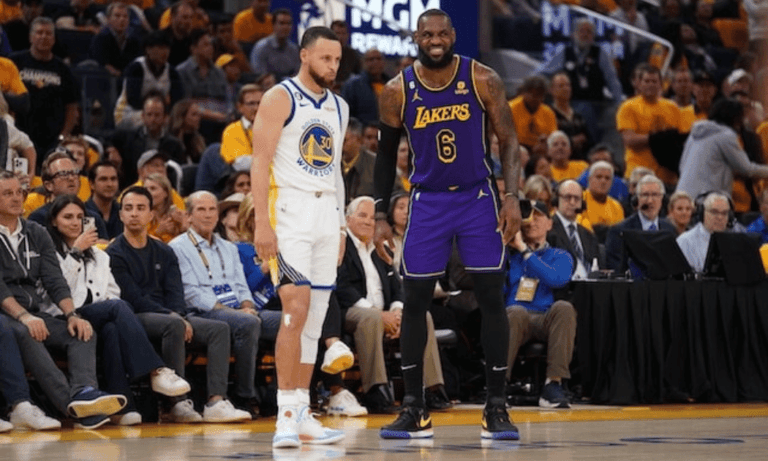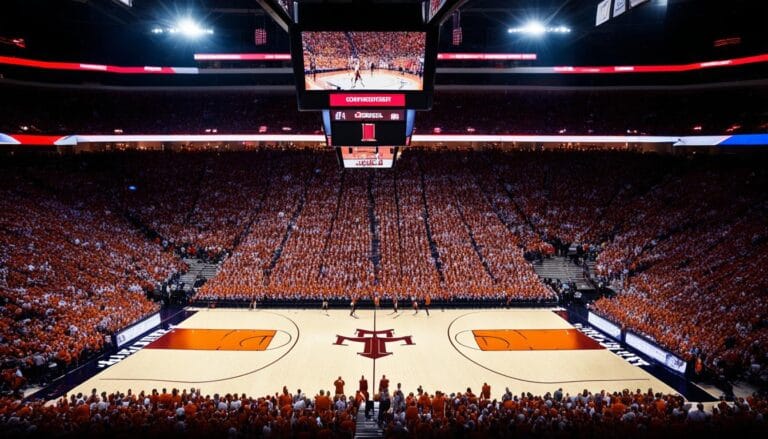Australian game developers are making a big impact in the gaming world. Titles like Untitled Goose Game, Unpacking, and Cult of the Lamb have been very popular. But, aussie-made VR games are also shining, showing off great Aussie talent and creativity.
Local studios are doing amazing things in VR gaming. They’re creating experiences that use the latest tech to make players feel like they’re in another world. Games like Espire 1: VR Operative and Max Mustard are standouts in the virtual reality scene.
The world of VR gaming is growing fast. Australian developers are ready to make a big mark in its future. They have the talent and support needed, including funding and resources for their projects. Australia is becoming a key place for new and exciting VR games.
Key Takeaways
- Australian indie developers are creating groundbreaking VR games that showcase homegrown talent and innovation
- Aussie-made VR games are leveraging cutting-edge technology to deliver immersive experiences
- Studios like Toast Interactive are pushing the boundaries of VR game design with titles like Max Mustard
- Australia’s supportive ecosystem, including funding opportunities, is fostering the growth of the VR gaming industry
- As VR technology continues to advance, Australian game developers are well-positioned to shape the future of virtual reality gaming
The Rise of Australian VR Game Development
Australia stands out in the gaming world, especially in virtual reality (VR). The country’s game studios and local talent lead the charge. They bring unique and exciting interactive stories to life, catching the world’s attention.
About 20% of the world’s favorite VR games come from Australia. Most are from Queensland, making it a hotspot for VR development. Here, creative minds find a supportive and inspiring home to create.
Australia’s Growing Presence in the Global Gaming Industry
In Australia, the games industry is booming. It hit AU$4.21 billion ($2.67 billion) in value in 2021/22, up 5% from the year before. Mobile and digital games led this surge.
Game developers in Australia earned AU$284 million ($180.1 million) last year, up 26%. Jobs also spiked, with 2,104 full-time positions in December 2022, a 59% jump. This shows the industry’s strength and promise.
| Metric | Value |
|---|---|
| Total market value of Australian games industry (2021/22) | AU$4.21 billion ($2.67 billion) |
| Mobile revenue (2021/22) | AU$1.56 billion ($989.2 million) |
| Digital revenue (2021/22) | AU$1.5 billion ($951.1 million) |
| Revenue generated by Australian developers (2021/22) | AU$284 million ($180.1 million) |
| Full-time employees in Australian games industry (Dec 2022) | 2,104 |
Pioneering VR Game Studios in Australia
Studios like Toast Interactive lead the VR charge in Australia. With 30 experts working on innovative VR, they showcase the nation’s creativity. They’re changing the game with their unique stories and experiences.
Toast Interactive’s Max Mustard is a standout, offering a new perspective in VR. This game, available on Meta Quest, will soon launch on PCVR and PlayStation VR2. It’s breaking boundaries and gaining fans.
Toast Interactive and others succeed thanks to help from Screen Queensland. This organization supports through funding and training, keeping Aussie talent competitive. It ensures Australia’s continued success in the VR world.
“VR technology is becoming more accessible and widely available, allowing for more engagement with audiences through immersive experiences.” – Industry Expert
The VR industry’s growth is just beginning, with projections favoring VR over AR next decade. Australian developers, like those at Toast Interactive, have a unique chance. They can shape the future of VR gaming, with their innovative and captivating narratives.
Toast Interactive: Leading the Charge in VR Innovation
Toast Interactive is a leading light in Australian VR game development. It’s known for its groundbreaking work in the field. Under Richard Eastes’ leadership, the studio in Queensland has raised the bar for virtual reality experiences.
Richard Eastes points out that Australia makes about 20% of the best-selling VR games globally. A large share of these games comes from Queensland. This focus has made Queensland a key player in VR development, with Toast Interactive leading the way.
Richie’s Plank Experience: Pushing the Boundaries of VR
Ritchie’s Plank Experience is a standout game from Toast Interactive. It’s well-known for its innovative play and being deeply immersive. The game uses the latest tech and engaging stories to redefine virtual reality.
This success has put Toast Interactive and Australia on the global VR gaming map. Their ongoing innovation keeps the studio at the forefront of VR development.
Max Mustard: A Unique Third-Person VR Adventure
Max Mustard is Toast Interactive’s latest venture. It’s to be revealed at Gamescom soon. This game, from a third-person view, shows the studio’s unique creativity and open-mindedness in VR.
Choosing third-person gameplay is a bold move in the VR world. It displays Toast Interactive’s innovative spirit in game design.
| Game | Platform | Perspective | Release Status |
|---|---|---|---|
| Richie’s Plank Experience | Multiple VR Platforms | First-Person | Released |
| Max Mustard | Meta Quest, PCVR, PlayStation VR2 | Third-Person | Available on Meta Quest, Upcoming on PCVR and PlayStation VR2 |
Developing Max Mustard has shown Toast Interactive’s evolution and dedication. In two years, it grew from two people to a team of 30. Support from Screen Queensland has been vital in this growth.
As Toast Interactive advances in VR game development, its impact grows. With its groundbreaking work, dedication, and immersive experiences, the studio is making waves in global VR innovation.
The Challenges and Rewards of Developing VR Games
Creating VR games is different from making traditional ones. Developers face the task of preventing motion sickness. They have to design worlds that are both immersive and comfortable for players.
However, moving from traditional to VR games is not too hard. This change brings new chances to deeply interact with players. With immersive settings, VR games connect with the audience in ways that go beyond regular games.
“Making the jump to VR games is a powerful move. It taps into deep emotions similar to traditional games, while offering new engagement levels.” – Richard Eastes, Co-Founder & Creative Director at Toast Interactive
The VR game market is picking up speed, expecting a large growth through 2028. This is due to better VR technology, higher demand, and the popularity of e-sports.
- Technological advancements in VR hardware and software
- Increasing consumer demand for immersive gaming experiences
- The rise of e-sports and multiplayer VR games
Globally, more gamers are joining the VR scene, from casual to pros. COVID-19 has pushed more people towards virtual gaming. This has increased the interest in VR games.
| Year | Global VR Game Market Size |
|---|---|
| 2021 | USD 6.27 billion |
| 2028 (projected) | USD 29.24 billion |
In Australia, VR game development is booming. Australian studios, like Toast Interactive, are leading the way. They are making globally popular VR games. This shows Australia’s strong position in creating exciting, immersive game experiences.
Crafting Immersive Worlds: The Art of VR Game Design
To make cool virtual reality games, you have to know how we move and interact in real life. Designers learn a lot about how people act and touch things. Then, they use this to make virtual worlds that feel real and hook players emotionally and sensorially.
Making VR games that feel real is tricky but fun. It mixes good storytelling, smart level design, and fun game rules. Game creators use lessons from our daily life to make game worlds feel true and grab players into the story.
Designing Levels for Comfort and Engagement
Making players comfortable in VR games is a big deal. Designers watch out for things like how the camera moves and how you walk around. They do this to make sure you don’t feel sick or confused while playing.
Good level design in VR games is all about the right space for you to move and have fun exploring. They avoid quick camera turns and encourage walking straight. This makes the game feel real and comfortable for you.
| Design Element | Importance in VR Game Design |
|---|---|
| Realistic object interaction | Enhances immersion and believability |
| Intuitive navigation | Reduces confusion and motion sickness |
| Engaging storyline | Keeps players emotionally invested |
| Pacing and challenge | Maintains player interest and motivation |
Leveraging Real-World Experiences in VR Game Development
Creating immersive worlds in VR means learning from real life. Designers look at how we use stuff and move around every day. Then, they use these ideas in their game worlds to make them feel true and alive.
“The key to creating a believable VR experience lies in the details. From the way objects respond to touch to the subtle environmental cues that guide player movement, every element must be carefully crafted to maintain the illusion of reality.”
Using our everyday experiences in VR games is a cool way to make games better. Developers can make games that really draw you in. As VR gets more popular, making immersive worlds will be very important for game makers.
Supporting Local Talent: The Role of Screen Queensland
Screen Queensland is key in helping Australian VR game talent grow. It offers funds that help companies like Toast Interactive grow and find new talent. This way, Australia’s VR game scene gets stronger.
Toast Interactive, known for VR games, is growing with Screen Queensland’s support. They went from two people to a team of 30. This growth is thanks to Screen Queensland’s help, which aids in keeping and growing talent in the industry.
Screen Queensland is dedicated to helping the VR sector with many supportive projects. These include things like the Digital Games Incentive, Games Grants, and Residency programs.
These help create jobs and start new games. The Digital Games Tax Offset is especially helpful for bigger projects, saving money on development costs.
| Initiative | Impact |
|---|---|
| Digital Games Incentive | Created over 500 full-time game development jobs |
| Games Grants | Supported the development of emerging and established game projects |
| Games Residency programs | Fostered talent retention and growth in the industry |
| Digital Games Tax Offset (DGTO) | Provided a 30% refundable tax offset for projects exceeding AUD $500,000 |
Screen Queensland’s funds have backed games like Max Mustard. Studios like Prideful Sloth have also used these funds for their projects and to go to international events. This helps the whole industry.
“Screen Queensland’s support has been instrumental in our growth and success. It has allowed us to hire locally, increase our marketing efforts, and attend industry events like GCAP and GDC.” – Toast Interactive spokesperson
Screen Queensland’s help goes beyond just giving money to studios. It has built a strong community and encouraged teamwork among developers. This support makes studios like Toast Interactive stand out, showing Australia’s strength in the VR game world.
The Future of VR Gaming in Australia
The VR industry in Australia is getting bigger and better. Game developers here are making a big impact on VR gaming’s future. With each new VR headset, more and more people are getting into this tech for the long haul. This is especially true in Australia, where a fifth of the world’s top VR games come from, many from Queensland.
Queensland is a hub for VR fans, which has helped new VR tech and games flourish. For example, Toast Interactive started small but quickly grew to a team of 30. Their growth shows how much promise the VR field has, thanks to the country’s talented developers.
Embracing New VR Technologies and Devices
Australian developers are excited about new VR gear. They are ready to show the world just what they can do with VR gaming. Australia aims to lead in creating fresh and engaging VR experiences. Its strong VR development base and growing talent pool are solid steps in that direction.
But, challenges exist in adopting new VR gear. The cost is a significant issue for many, which slows down how fast VR games can grow. Yet, five years ago, experts predicted VR would be more popular than AR in the next 10 years. This forecast bodes well for VR’s future.
Nurturing the Next Generation of VR Game Developers
Australia is working hard to keep its skilled VR developers at home. Efforts like Screen Queensland’s game funding aim to do just that. Such initiatives are key to helping the industry expand.
Toast Interactive and others are also instrumental in fostering young VR developer talent. They work on groundbreaking VR projects, creating opportunities for the next generation. Their work is essential in growing the field’s talent pool.
| Key Factors | Impact on the Future of VR Gaming in Australia |
|---|---|
| High concentration of VR enthusiasts in Queensland | Drives innovation and growth in the VR industry |
| Rapid growth of VR game development studios | Contributes to the creation of new VR technologies and experiences |
| Adoption of new VR technologies and devices | Pushes the boundaries of VR gaming and attracts more users |
| Nurturing the next generation of VR game developers | Ensures a sustainable future for the VR industry in Australia |
The VR sector is on an exciting path in Australia. The country is strategically positioned to pioneer the next wave of captivating and interactive VR adventures. By embracing the latest tech, supporting new talent, and continually innovating in VR, Australia is primed to be a dominant player in the global VR gaming scene.
Espire 1: VR Operative – A Stealth Action Game Made in Melbourne
Coming from the lively Melbourne, Australia, Espire 1: VR Operative is a game everyone is looking forward to. It mixes the silent-but-deadly genre with virtual reality. The team at Digital Lode Immersive Media shows how strong the game-making scene is in Melbourne. They prove VR can totally suck players in with its action-packed missions.
From Side Project to Highly Anticipated VR Title
The story started as a fun project by its founder, Michael Wentworth-Bell. Then, it became a big VR game thanks to a video that impressed Tripwire Interactive. Now, with help from Film Victoria, Espire 1: VR Operative is ready to show the world Melbourne’s game talent.
Bringing Classic Gaming Experiences to VR
Espire 1: VR Operative is inspired by hits like Goldeneye 007 and Metal Gear Solid. But it offers more in VR. You’re an elite spy, going into enemy spots to gather info and stop threats. With VR, moving and using gadgets feels real.
The game’s story mode includes missions that test your stealth and tactics. The best part? You can control the game just by talking into your VR headset. It makes Espire 1: VR Operative feel even more real.
| Feature | Description |
|---|---|
| Freedom of Movement | Full freedom of movement within the virtual environment, designed to minimize motion sickness for almost all players |
| Weapons and Gadgets | A variety of weapons and gadgets, including a tranquilizer pistol and spy cameras, for mission completion |
| Global Leaderboard | Ranks players based on mission time, movement, stealth, ammo conservation, takedowns, and other factors |
| Intuitive Controls | Controls that mimic real-life actions for natural and immersive interactions |
| AI Enemies | Enemies actively hunt the player, responding to sight, sound, and other stimuli based on the player’s actions |
By merging strategy with VR, Espire 1: VR Operative aims to be a top pick for stealth gamers. Made in Melbourne, it spotlights Australia’s gaming prowess. It’s a preview of how simple games can become thrilling adventures with VR.
Overcoming Technical Challenges in VR Game Development
Developing VR games for standalone headsets like the Oculus Quest brings unique hurdles. These headsets have less power than those connected to PCs. This makes creating breathtaking experiences tough without slowing down. Game developers in Australia, for instance, Digital Lode, have faced big challenges. They’ve worked hard to make their games look good and play well on these devices.
striking a good balance between looks and performance is a big challenge. Making detailed 3D models, animations, and assets isn’t cheap. For medium-sized VR/AR games, making content could cost from $100,000 to $500,000. The cost depends on the design, graphics, and how interactive the game is.
Australian game developers have found new ways to tackle these challenges. XOCUS, a studio focusing on VR and AR games, keeps costs down. They work in small teams and concentrate on gameplay over just fancy graphics. This has helped them launch games like Omega Pilot and Presentiment of Death successfully.
Optimizing Performance for Standalone VR Headsets
Making games run well on standalone VR headsets is crucial. Developers have to work around the devices’ limits to ensure great experiences. Here are some ways they make games perform better:
- Reducing polygon counts and texture resolutions
- Using smart rendering to hide parts not seen and simplify detail when far away (called occlusion culling and LOD systems)
- Improving the game’s code to use less of the device’s main processor
- Using asynchronous programming techniques for smoother gameplay
By concentrating on these performance areas, Australian developers make games for headsets like the Oculus Quest. These efforts ensure players worldwide enjoy smooth and immersive game experiences.
| VR Game Development Challenge | Potential Solution |
|---|---|
| Limited processing power of standalone headsets | Optimize 3D models, textures, and code for better performance |
| High cost of creating detailed game assets | Focus on engaging gameplay over high-end graphics |
| Market fragmentation across VR platforms | Prioritize development for key platforms with large user bases |
| Difficulty in targeting VR audiences through advertising | Leverage social media and influencer marketing to reach VR enthusiasts |
The VR game development scene in Australia is growing, despite its challenges. With the VR and AR market poised to hit $31.12 billion this year, there are plenty of opportunities. As VR tech becomes more popular for various uses, there’ll be more need for top-notch VR content.
Aussie-Made VR Games: A Showcase of Homegrown Talent
Games like Espire 1 show the amazing talent in Australia’s gaming world. Thanks to groups like Film Victoria and Screen Australia, many Australian game makers have got support. They received over $1.6 million for their work on 27 games.
The VR gaming industry is growing fast. Australia is doing well in this global market. Local game makers work hard, and they get help from the government. This makes the future bright for aussie-made VR games.
One big event, the AVCon Festival, has been helping game makers for 21 years. It’s supported over 1000 developers from Australia and beyond. This shows how strong gaming is in Australia. With more fans and support for new talent, Australia’s VR games will keep getting better. This cements Australia’s place as a top player in making VR games.
